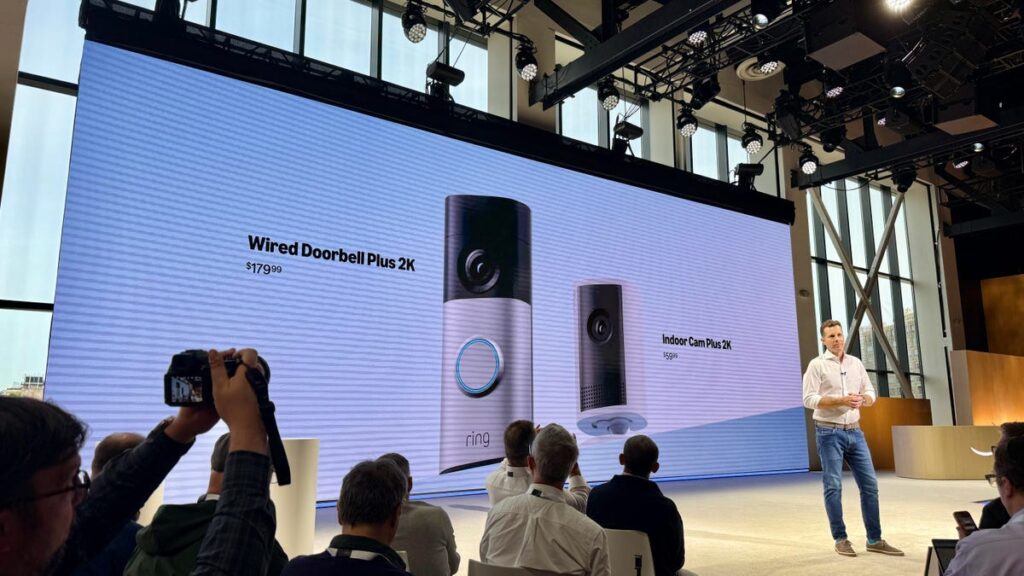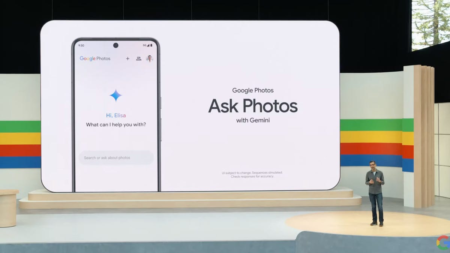Less than two years after removing a feature that made it easier for law enforcement agencies to request footage from owners of Ring doorbells and other security products, Amazon has partnered with two companies that will help facilitate the same kinds of requests.
Two weeks after rolling out a new product line for 2025, Ring, owned by Amazon, announced a partnership with Flock Safety, as part of its expansion of the Community Requests feature in the Ring Neighbors app. Atlanta-based Flock is a police technology company that sells surveillance technology, including drones, license-plate reading systems and other tools. The announcement follows a partnership Ring entered into with Axon, previously Taser International, which also builds tools for police and military applications.
Don’t miss any of our unbiased tech content and lab-based reviews. Add CNET as a preferred Google source.
Taken together, the two partnerships point to Amazon’s Ring division not only reintroducing tools for police to request images or video from Ring customers without a warrant but also to a closer alignment with companies that have ties to police departments, ICE, the Secret Service and branches of the military.
Ring described the process for Community Requests in one of its blog posts. It said an agency that is verified with Axon Evidence, which Axon owns, could submit a community request that includes a specific location and timeframe of an incident and details about what’s being investigated. Â
The request would appear publicly in the Neighbors feed for people in that area, notifying them with the option to provide footage for that incident.Â
“If you ignore the request, the agency will not know; your anonymity and videos are protected. The choice is entirely yours,” Ring said in the post.
According to the post, video footage submitted goes directly to Axon Evidence, where it is verified for authenticity.
Community Requests are ‘local,’ according to Ring
In an email responding to our questions, a representative for Ring reiterated the process for Community Requests, adding that “only local public safety agencies can initiate Community Requests.”Â
The localized area submitted is limited to half a square mile, and those agencies don’t have access to information on who will receive a request to share footage or how many Ring users are in a given area, according to Ring. The company says those requesting information must follow community guidelines.Â
According to Ring’s website, only local and county entities — whether they’re law enforcement, nonprofits, or local government — can set up a Neighbors Verified account. While federal agencies or local branches of federal agencies might be customers of Axon or Flock, they wouldn’t be eligible for a Neighbors Verified account and would not be eligible to file a Community Request, even if it were done on their behalf by a third party such as Axon or Flock, the Ring representative confirmed to CNET.
The partnerships would give those agencies more entry points for creating these requests. Amazon hinted in one of its blog posts that it may add partnerships with other companies. Community Requests can only come from agencies that have been verified by a third party, such as Flock or Axon, and by Ring as well.
Back in 2018, when Flock Safety was a nascent startup, it set up its own cameras in neighborhoods to provide surveillance to fight crime.Â
Surveillance bystanders
While the footage from Ring devices is only given to local organizations by permission of the footage’s owner, that doesn’t mean other people — such as someone walking their dog or children playing in a neighborhood — are free from potential privacy issues if they’re captured on camera.
“This arrangement creates a tricky problem from a privacy standpoint for consumers because the people who never signed up for surveillance in the first place could be watched, and they never agreed to that,” said Erik Avakian, a technical counselor at Info-Tech Research Group and the former chief information security officer for the Commonwealth of Pennsylvania.
Avakian said that making Ring footage availability opt-in still doesn’t address the issue of what happens to footage once it’s in the hands of law enforcement or other groups.Â
“It could be used for other investigations, shared with others, or perhaps even used to capture biometrics and personal information like facial recognition features,” he said. “The videos might also end up revealing more about neighbors, visitors, or passersby than about the actual incident itself.”
He said one solution would be to blur out any individuals or identifiable artifacts from footage if it’s not part of the investigation. Regardless of whether that’s possible or not, Avakian said that companies such as Ring and those requesting footage should be transparent about how videos or images will be used, how long data will be stored, and if it’s shared with anyone else.
Mesh policing
What Ring and local law enforcement are doing with Community Requests may create some efficiencies for agencies that are stretched thin and don’t have the resources to gather as much evidence as what doorbell and security camera owners may be able to provide.
“Crime isn’t slowing down, but police resources are stretched thinner than ever,” said Ryan Schonfeld, co-founder and CEO of HiveWatch, which uses AI technology to create security ecosystems. Â
“Technology integration gives a single officer access to necessary data that was previously unavailable, doing the work that would have required an entire team,” Schonfeld said. “If we want crimes solved and public safety maintained, we need to embrace the interoperability that makes it possible with the resources we actually have.”
Read the full article here














